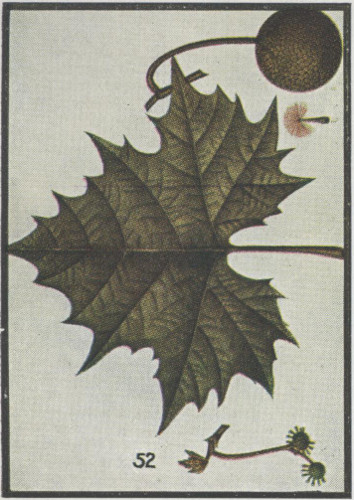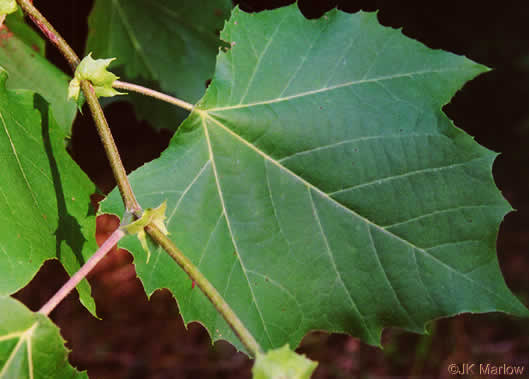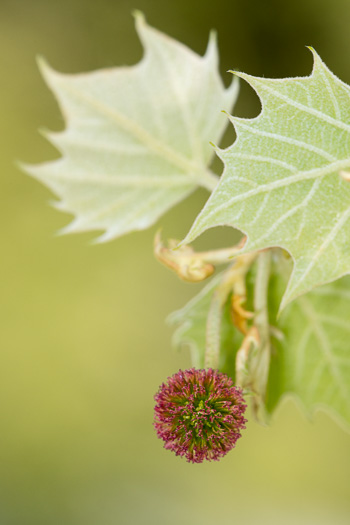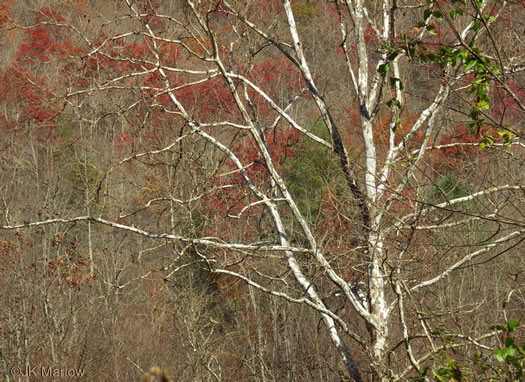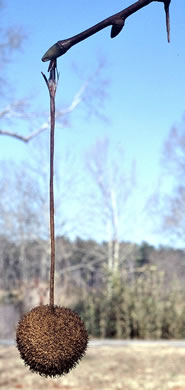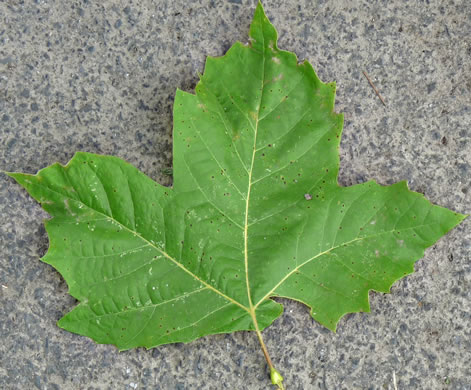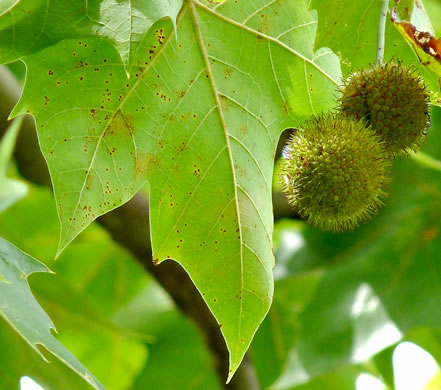Hovering over an image will enlarge it and point out features (works better on desktop than on mobile).
![]() A camera indicates there are pictures.
A camera indicates there are pictures.
![]() A speaker indicates that a botanical name is pronounced.
A speaker indicates that a botanical name is pronounced.
![]() A plus sign after a Latin name indicates that the species is further divided into varieties or subspecies.
A plus sign after a Latin name indicates that the species is further divided into varieties or subspecies.
Most habitat and range descriptions were obtained from Weakley's Flora.
Your search found 2 taxa in the family Platanaceae, Sycamore family, as understood by Vascular Flora of the Carolinas.

![]()
![]() Common Name:
American Sycamore, Planetree
Common Name:
American Sycamore, Planetree
Weakley's Flora: (4/24/22) Platanus occidentalis var. occidentalis FAMILY: Platanaceae
INCLUDED WITHIN PLANTS National Database: Platanus occidentalis FAMILY: Platanaceae
INCLUDED WITHIN Vascular Flora of the Carolinas (Radford, Ahles, & Bell, 1968): Platanus occidentalis 096-01-001 FAMILY: Platanaceae
Habitat: Riverbanks and alluvial forests, streambanks, sometimes weedy on rocky roadcuts
Common
Native to the Carolinas & Georgia

![]() Common Name:
London Planetree
Common Name:
London Planetree
Weakley's Flora: (4/24/22) Platanus ×hispanica FAMILY: Platanaceae
SYNONYMOUS WITH PLANTS National Database: Platanus ×hispanica [occidentalis × orientalis] FAMILY: Platanaceae
Habitat: Disturbed areas
Hybrid of native and non-native
Your search found 2 taxa. You are on page PAGE 1 out of 1 pages.

